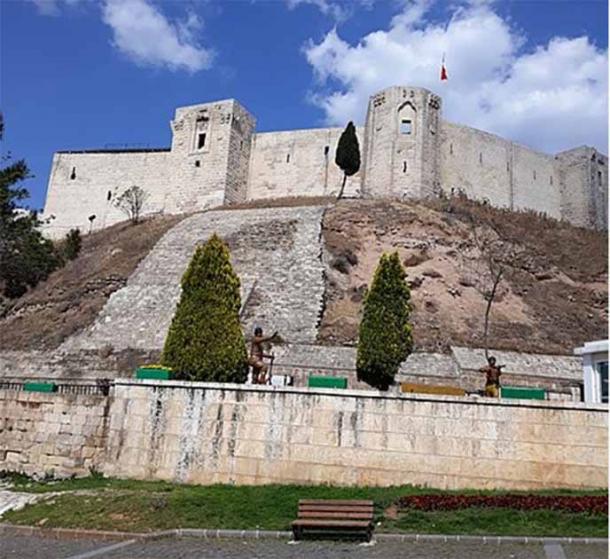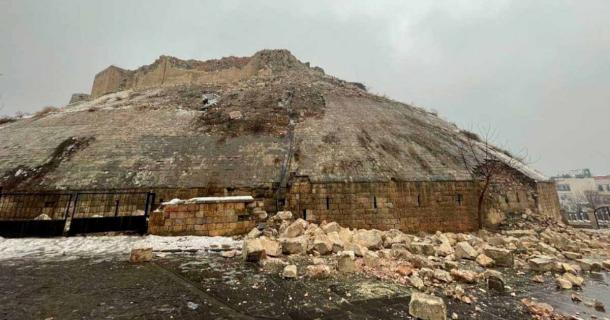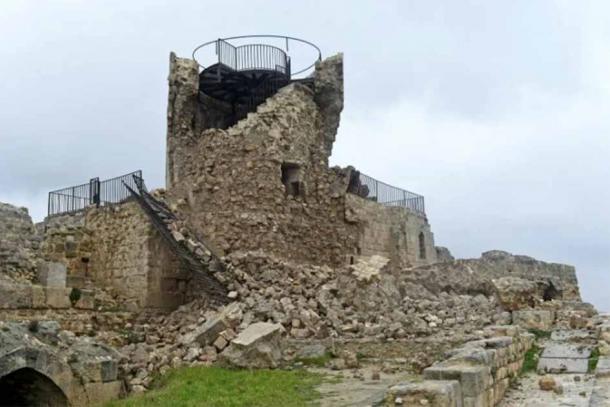
Ancient Engineering Saves Sites From Earthquake’s Wrath
Concerns have arisen for ancient sites after two earthquakes struck Turkey and Syria on Monday.
Thousands of fatalities have now been reported in Turkey and Syria due to the powerful earthquake with a magnitude of 7.8, which shook areas as far as Lebanon and Israel. The epicenter of the quake, which had a depth of 24.1 km (14.9 mi), was located 23 km (14.2 mi) east of Nurdagi in south-central Turkey's Gaziantep province, according to the United States Geological Survey (USGS).
Putting this earthquake into perspective, if it was only 0.2 magnitude points stronger it would have registered over 8, making it a “megathrust earthquake.”
The area most affected encompasses some of the world's most historic and culturally significant structures, and a report in Daily Sabah reveals how the seismic activity damaged walls at Gaziantep Castle, the dome of the Şerefeli Camii, while AFP also reports on the to the west gate and citadel structures of Aleppo's old city.
- Historic Monuments Including Gaziantep Castle Destroyed in Earthquake
- Ancient City and Citadel of War-Torn Aleppo Are Syria’s Golden Age Legacy

Walls and towers of Gaziantep Castle before the damage (ToprakM/ CC BY-SA 4.0)
The ‘Architect Of Castles’ Greatest Test
Located in the Seferpasa area, Gaziantep Castle is built on a hill at the center of Gaziantep and it ranks as one of Turkey’s best-preserved ancient stone citadels. From as early as 2,000 BC Hittite soldiers used this raised location as an observation point, but the original stone castle was constructed by the Romans in the second and third centuries. During the reign of the Byzantine emperor, Justinian I (527 to 565 AD), the so-called "Architect of Castles," the structure was greatly expanded with heavier defenses.
The original name of Gaziantep was “Antep.” However, during World War I the city was attacked by French allied forces. When they retreated in 1921, Antep, had the word “Gazi” added, which means “veterans.” Therefore, symbolically, Gaziantep castle is a monument to the soldiers who fought during the war, including Sahin Bey, who led the defense forces against allied troops. CNN reported that the partial destruction of a wall at Gaziantep Castle suggests other ancient monuments in the region may also have been damaged in the quake.
- Adapting to Survive: How Byzantium Survived the Arab Invasions
- The Royal Bloodline Of The Hittite Empire

The recently partially destroyed walls of Gaziantep Castle. (DHA/ Daily Sabah)
4,000 Years Of Defenses, Shaken Like Never Before
According to a series of Tweets by the Turkish state-run news agency, Anadolu, the 7.8-magnitude earthquake “collapsed hundreds of buildings across Turkey and Syria.”
According to the Daily Sabah report, also damaged during the earthquake was the dome of the historic “İki Şerefeli Camii” (mosque), which is located to the southwest of the citadel. While most mosques have only one balcony on their minarets, this one has two, hence its name “İki Şerefeli Camii” or “Double Balcony Mosque.”
Andalu recently Tweeted that the UN General Assembly held “a minute of silence for victims of the deadly earthquake”. And they also published a video of Palestinian Muslims performing a funeral prayer in absentia, at the Al-Aqsa mosque in Jerusalem.

Damaged Ottoman mill building in the Aleppo Citadel. (Syria's Directorate-General of Antiquities and Museums)
Aleppo Citadel
In Syria, the UNESCO listed city of Aleppo, considered the oldest continuously inhabited city in the world, was also rocked by the quake.
A statement by Syria's Directorate-General of Antiquities and Museums revealed the damage, saying, "Parts of the Ottoman mill inside the citadel" of Aleppo have collapsed, while "sections of the northeastern defensive walls have cracked and fallen".
Also within the 13th century citadel, parts of the dome of the minaret of the Ayyubid Mosque fell off and the entrance to the fort itself was damaged, reports Yahoo!News.
Overall, the earthquakes in Turkey and Syria have caused widespread destruction and loss of life, and ancient sites. And while people are still being pulled from the rubble, at moments like these, damage to archaeology becomes tomorrow’s worry. But it must be noted that while hundreds of modern buildings are collapsing, these, and thousands of other ancient sites have only been ‘damaged,’ having been built with now lost engineering skills that better resisted the wrath of the gods.
Top image: Damaged Ottoman mill building in the Aleppo Citadel. Source: Syria's Directorate-General of Antiquities and Museums
By Ashley Cowie















